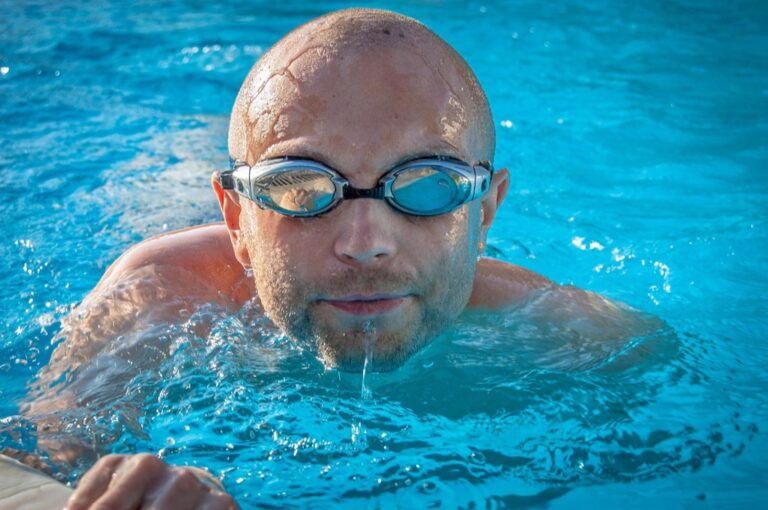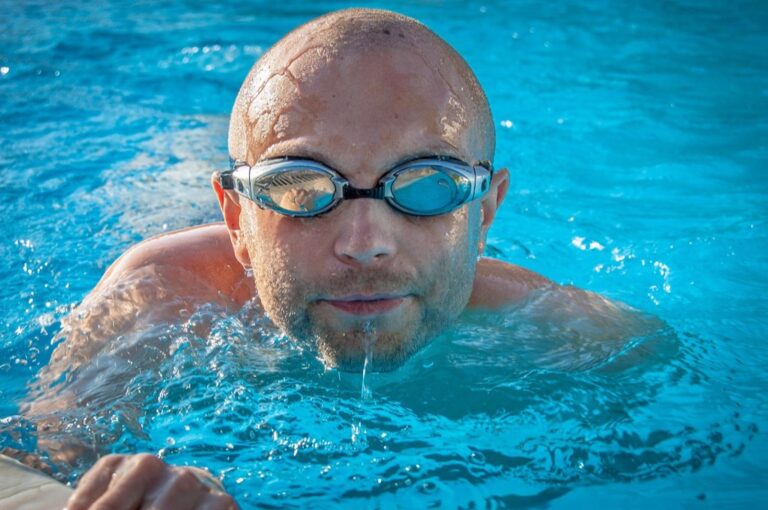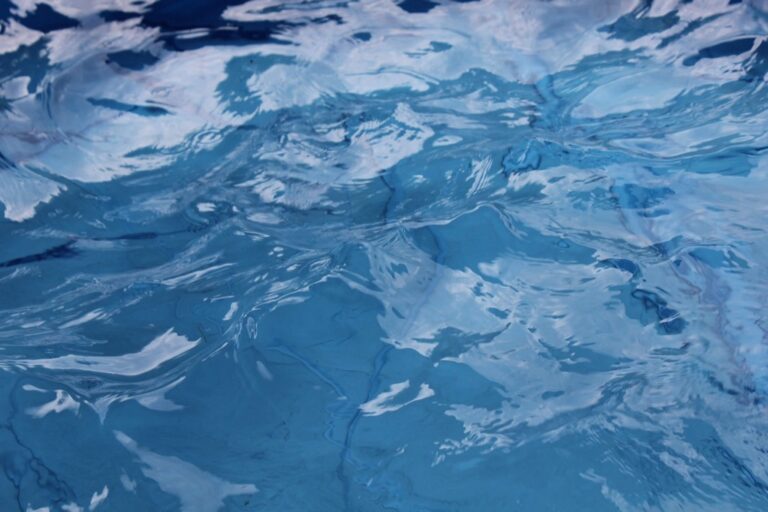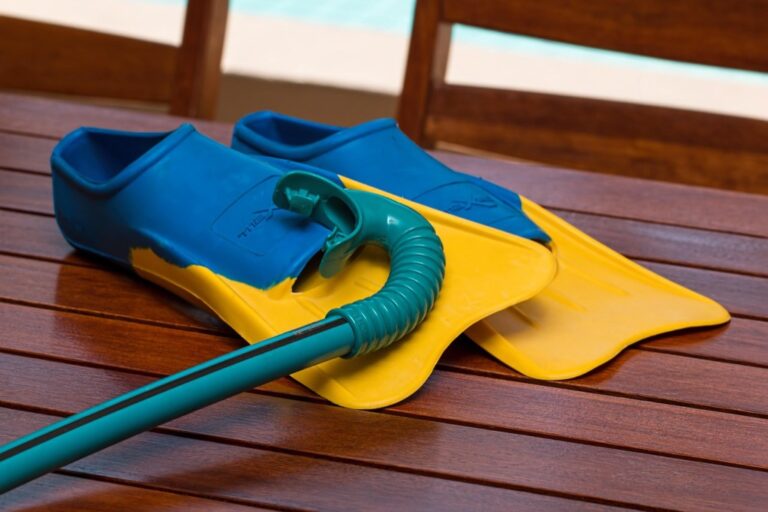7 Effective Pool Deck Drainage Solutions That Prevent Costly Damage
Discover 7 proven pool deck drainage solutions to prevent standing water, slips, and costly damage. From French drains to permeable pavers – protect your investment!
Standing water around your pool deck isn’t just unsightly—it’s a safety hazard that can lead to slips falls and structural damage to your outdoor space. Poor drainage transforms your relaxing poolside retreat into a breeding ground for mosquitoes algae and costly repairs that could’ve been easily prevented.
The bottom line: Proper pool deck drainage protects your investment extends your deck’s lifespan and keeps your family safe. Whether you’re dealing with existing water issues or planning a new installation the right drainage solution can save you thousands in future repairs while maintaining your pool area’s aesthetic appeal.
Disclosure: As an Amazon Associate, this site earns from qualifying purchases. Thank you!
Understanding Pool Deck Drainage Essentials
Every successful pool deck starts with understanding how water moves across surfaces and where it needs to go. You’ll save yourself countless headaches by grasping these drainage fundamentals before issues arise.
Why Proper Drainage Matters for Pool Decks
Proper drainage prevents structural damage to your pool deck’s foundation and surrounding areas. Standing water seeps into concrete joints and freeze-thaw cycles create expensive cracks. You’ll also eliminate slip hazards that turn your pool area into a liability nightmare for family and guests.
Achieve a flawless, semi-matte complexion with e.l.f. Flawless Satin Foundation. This lightweight, vegan formula provides medium coverage that blends seamlessly to improve skin tone and texture.
Common Pool Deck Water Damage Issues
Pooling water causes concrete spalling, where surface layers flake off due to freeze-thaw damage. You’ll notice rebar corrosion in older decks, leading to structural instability. Efflorescence creates white chalky deposits, while trapped moisture promotes mold growth in nearby structures and landscaping.
Signs Your Pool Deck Needs Better Drainage
Water puddles that remain 24 hours after rain indicate inadequate slope or blocked drainage. You’ll spot algae growth in consistently wet areas and notice cracks forming along deck edges. Musty odors near the pool and loose or shifting pavers signal that water’s compromising your deck’s stability.
Installing French Drain Systems Around Pool Perimeters
Protect your foundation with the NAACOO downspout extension. This low-profile catch basin with a flexible, shapeable pipe extends up to 8ft to divert rainwater, preventing water damage and erosion.
French drains represent one of the most reliable solutions for managing water around your pool deck. This subsurface drainage system prevents water from accumulating where it can cause the most damage.
How French Drains Work for Pool Areas
French drains collect water through a perforated pipe surrounded by gravel, directing it away from your pool deck’s foundation. The system intercepts groundwater and surface runoff before it reaches critical areas. You’ll find this particularly effective during heavy rainfall when traditional surface drainage can’t handle the volume.
Best Placement Strategies for Maximum Effectiveness
Position French drains 3-6 feet from your pool deck’s edge to intercept water before it reaches the structure. Install them at the lowest grade points where water naturally flows. Strategic placement along the deck’s uphill side provides maximum protection against water infiltration and pooling issues.
Materials and Installation Considerations
Use 4-inch perforated PVC pipe wrapped in landscape fabric to prevent clogging from soil particles. Surround the pipe with 3/4-inch crushed stone for optimal drainage flow. You’ll need proper slope calculations—typically 1% grade minimum—to ensure water moves efficiently toward your designated discharge point.
Creating Proper Slope and Grading for Natural Water Flow
The foundation of effective pool deck drainage starts with proper slope and grading. You’ll prevent 90% of water pooling issues by establishing the right grade before any other drainage solutions come into play.
Calculating the Ideal Slope Percentage
Standard pool deck slope requires a 1-2% grade minimum for effective drainage. This translates to a 1-2 inch drop for every 10 feet of horizontal distance. You can measure this using a 4-foot level and ruler – place the level on your deck and measure the gap underneath at the lower end.
Professional Grading Techniques
Laser levels provide the most accurate slope measurements for large pool decks. Professional installers use string lines and grade stakes every 8-10 feet to maintain consistent slope. You’ll need to compact the base material in 4-inch lifts using a plate compactor to prevent future settling that disrupts drainage patterns.
Maintenance Tips for Sloped Surfaces
Regular inspection prevents slope degradation from settling and erosion. Check your deck’s grade annually using a carpenter’s level – look for areas where water pools after rain. Clean debris from drainage pathways monthly and regrade any settled areas immediately to maintain proper water flow direction.
Implementing Channel Drain Solutions for Heavy Water Flow
Effectively manage water runoff with this durable HDPE trench drain system. The perforated design ensures fast drainage, while the interlocking channels create a total length of 236.22 inches for versatile use around pools, patios, and more.
Channel drains excel at managing high-volume water runoff that overwhelms traditional drainage methods. You’ll find them particularly effective during heavy storms when your pool deck faces rapid water accumulation.
Types of Channel Drains for Pool Decks
Effectively manage standing water with this durable drainage trench. This 3-pack includes 10' of recycled plastic channel with galvanized steel grates, end cap, and outlet, supporting up to 10,000 lbs. Grates easily snap in and out for maintenance.
Polymer concrete channels resist chlorine damage while handling heavy foot traffic around pool areas. Steel channels offer maximum durability but require regular maintenance to prevent rust from pool chemicals. Fiberglass options provide lightweight installation with excellent chemical resistance for most residential applications.
Strategic Placement Along Pool Edges
Position channels 2-3 feet from pool coping to capture splash-out and deck runoff effectively. Install them perpendicular to water flow patterns, targeting areas where you notice consistent puddling after swimming sessions. Corner installations work best for L-shaped pools where water naturally converges.
Connecting to Main Drainage Systems
Connect channel outlets to existing storm drains using 4-6 inch PVC pipes with proper slope maintenance. You’ll need catch basins at connection points to prevent system backflow during heavy rainfall. Always install cleanout access points every 50 feet for maintenance accessibility.
Adding Permeable Pavers and Porous Materials
Create stable and eco-friendly surfaces with HexPave permeable pavers. Made from 100% recycled plastic, these grids handle up to 27,000 lbs and are perfect for driveways, patios, and walkways.
Permeable solutions take drainage to the next level by allowing water to pass directly through your deck surface rather than forcing it to flow around obstacles.
Benefits of Permeable Pool Deck Surfaces
Permeable surfaces eliminate standing water by letting it drain through the material itself, reducing slip hazards by up to 75% compared to traditional concrete. You’ll see fewer puddles forming after rain or splashing, which means less algae growth and mosquito breeding around your pool area. These surfaces also reduce runoff into storm systems while naturally filtering water through the ground.
Best Permeable Materials for Pool Areas
Permeable concrete pavers offer the best durability for high-traffic pool decks, handling chlorinated water and freeze-thaw cycles effectively. Porous asphalt works well for larger areas but requires more maintenance in chlorine-heavy environments. Natural stone options like pervious limestone provide excellent drainage while maintaining an upscale appearance, though they cost 20-30% more than standard pavers.
Installation Process and Long-term Performance
Installation requires a 6-8 inch gravel base beneath permeable materials to ensure proper drainage function and structural support. You’ll need to clean permeable surfaces annually using pressure washing or vacuum sweeping to prevent pore clogging from debris and organic matter. Properly installed permeable systems maintain 80% of their drainage capacity for 15-20 years with regular maintenance.
Installing Pool Deck Drains and Scuppers
Stegmeier Deck Drain efficiently manages water runoff, protecting your deck and surrounding areas. Each carton contains 40 feet of grey SDDG drain, conveniently divided into five sections for easy installation.
Pool deck drains and scuppers provide direct water removal when surface drainage alone isn’t enough. These systems create dedicated pathways for water to exit your deck area quickly and efficiently.
Different Types of Pool Deck Drain Systems
Floor drains work best in covered pool areas where water collects in specific spots. Trench drains handle high-volume water flow along deck perimeters effectively. Scuppers mount through deck walls to channel water directly into landscaped areas below. Pop-up drains stay flush with your deck surface until water activates them.
Optimal Drain Placement Strategies
Position drains at natural low points where water already collects during rain. Install multiple small drains rather than one large drain to prevent overwhelming single outlets. Place drains 8-12 feet apart along pool deck edges for maximum coverage. Connect drain outlets to your main drainage system or direct them toward appropriate discharge areas.
Maintenance and Cleaning Requirements
Clean drain grates monthly to remove leaves and debris that block water flow. Flush drain lines quarterly with a garden hose to clear accumulated sediment. Inspect connections annually for loose fittings or damaged pipes that reduce drainage efficiency. Replace worn grates immediately since damaged covers create safety hazards and reduce water capture capacity.
Incorporating Landscaping Features for Natural Drainage
Landscape features naturally manage water flow while enhancing your pool area’s aesthetic appeal. Strategic plantings and garden designs create effective drainage systems that work with nature rather than against it.
Using Plants and Gardens as Drainage Solutions
Plants absorb excess water through their root systems and create natural filtration for runoff. Ornamental grasses like fountain grass or sedges planted 4-6 feet from your pool deck can intercept water before it reaches hardscaped surfaces. Native shrubs such as elderberry or spicebush thrive in wet conditions while providing privacy screening around your pool area.
Creating Rain Gardens Near Pool Areas
Rain gardens collect and slowly filter stormwater runoff from your pool deck surfaces. Position these shallow depressions 10-15 feet downhill from your pool to capture overflow during heavy rains. Design your rain garden with a gentle 6-inch depth and use river rock mulch to prevent erosion while directing water flow naturally toward existing drainage systems.
Selecting Appropriate Vegetation for Drainage
Choose plants that tolerate both wet and dry conditions since drainage areas experience fluctuating moisture levels. Perennials like cardinal flower and blue flag iris handle standing water while requiring minimal maintenance once established. Avoid plants with invasive root systems near pool infrastructure – instead select shallow-rooted options like hostas or astilbe that won’t interfere with underground utilities.
Conclusion
Your pool deck’s drainage system is a critical investment that pays dividends in safety longevity and maintenance costs. By implementing the right combination of these seven solutions you’ll create a water management system that protects your property while enhancing its value.
Remember that effective drainage isn’t about choosing just one method – it’s about creating a comprehensive approach that works for your specific situation. Whether you need French drains for heavy runoff channel systems for rapid water removal or permeable surfaces for natural filtration the key is proper installation and regular maintenance.
Don’t wait for water damage to force your hand. Start evaluating your current drainage situation today and take proactive steps to protect your pool deck investment for years to come.
Frequently Asked Questions
What are the main problems caused by poor pool deck drainage?
Poor pool deck drainage creates safety hazards including slippery surfaces and increased risk of falls. Standing water leads to structural damage through freeze-thaw cycles, concrete spalling, and rebar corrosion. It also promotes mosquito breeding, algae growth, mold development, and efflorescence on surfaces, resulting in costly repairs and maintenance issues.
How do I know if my pool deck needs better drainage?
Look for persistent water puddles that remain after rain, visible algae growth on surfaces, cracks in concrete or pavers, musty odors around the pool area, and shifting or uneven pavers. These signs indicate that water isn’t draining properly and may be causing structural damage to your pool deck.
What is a French drain and how does it help pool decks?
A French drain is a subsurface drainage system consisting of a perforated pipe surrounded by gravel that collects and redirects water away from pool foundations. It prevents water accumulation that causes damage and is particularly effective during heavy rainfall when surface drainage methods may fail.
Where should French drains be positioned around pool decks?
French drains should be positioned 3-6 feet from the pool deck’s edge and installed at the lowest grade points where water naturally flows. Use 4-inch perforated PVC pipe wrapped in landscape fabric, surrounded by crushed stone, with proper slope calculations to ensure efficient water movement away from the pool area.
What slope is recommended for proper pool deck drainage?
A minimum slope of 1-2% is recommended for effective pool deck drainage. This translates to a 1-2 inch drop for every 10 feet of horizontal distance. Proper grading with the right slope can prevent 90% of water pooling issues around pool decks.
What are channel drains and when should they be used?
Channel drains are linear drainage systems designed to manage heavy water flow, particularly during storms. They’re most effective when positioned 2-3 feet from pool coping and perpendicular to water flow patterns. Available in polymer concrete, steel, and fiberglass options, they rapidly capture and redirect large volumes of runoff.
How do permeable pavers help with pool deck drainage?
Permeable pavers allow water to pass directly through the surface, reducing standing water and slip hazards by up to 75%. They minimize algae growth and mosquito breeding while naturally filtering water. These systems can maintain 80% of their drainage capacity for 15-20 years with proper installation and maintenance.
What types of pool deck drains are available?
Pool deck drain options include floor drains for covered areas, trench drains for high-volume water flow, scuppers for channeling water into landscaped areas, and pop-up drains that activate automatically with water accumulation. Multiple small drains spaced 8-12 feet apart provide optimal coverage.
How can landscaping improve pool deck drainage?
Strategic landscaping with ornamental grasses, native shrubs, and rain gardens can absorb excess water and filter runoff naturally. Plants help manage water flow while enhancing aesthetics. Rain gardens specifically collect and filter stormwater, providing a sustainable drainage solution that complements traditional methods.
How often should pool deck drainage systems be maintained?
Perform monthly cleaning of drain grates, quarterly flushing of drain lines, and annual comprehensive inspections. Check for loose fittings, damaged pipes, and debris blocking drainage pathways. Regular maintenance ensures optimal performance and prevents costly repairs while maintaining safety around the pool area.












